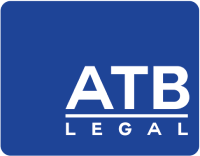This article is about trademark registration in Saudi Arabia. To know more about trademark registration in the UAE, refer to A Guide to Trademark Registration in the UAE: Steps, Costs and Benefits. To know about patents, copyrights and other intellectual property protection in the UAE, refer to Exploring UAE Intellectual Property Law.
In the booming and competitive business ecosystem of Saudi Arabia, your brand is one of your most valuable assets. Whether you’re launching a new product line, opening a concept café, or expanding your tech business—protecting your identity is not optional, it’s essential.
A registered trademark gives you exclusive rights to use your brand name, logo, or symbol across the Kingdom and serves as a powerful legal shield against imitation or infringement. At ATB Legal, we’ve helped local entrepreneurs, regional startups, and global businesses navigate this process, and we’re here to break it down—step by step.
This blog is a part of our The Ultimate Guide to Intellectual Property Law blogpost.
Step 1: Conduct a Trademark Availability Search
Before you file, you need to know if your proposed trademark is unique and available. SAIP (Saudi Authority for Intellectual Property) provides a public database where you can search existing trademarks.
Why this matters: Filing without checking first can lead to rejection or costly objections. A search helps avoid conflicts and protects your investment in branding.
Lawyer’s Note: We always recommend conducting a professional clearance search that includes phonetically and visually similar marks, especially in the same product or service class. This goes beyond the basic SAIP database and considers potential objections from competing rights holders.
Step 2: Prepare and File Your Trademark Application
Once you’re confident your mark is clear, we move to filing the application online through SAIP’s official IP portal.
The application must include:
- Applicant’s full name and legal status
• Trademark image or wordmark
• Description of the goods or services covered by the trademark (classified as per the Nice Classification system)
• A clear power of attorney (if you’re using a representative, like us!)
Lawyer’s Note: Choosing the right classes is critical. Filing under the wrong class could leave your core business unprotected or even delay enforcement rights later. For example, a café brand that fails to register under both food services and packaged goods may lose out on future brand extensions.
Step 3: Formal Examination by SAIP
After submission, your application goes through a formal examination. SAIP assesses whether:
- Your mark is distinctive and non-generic
• It does not conflict with public morals, religious principles, or existing registered marks
• It doesn’t include national flags, emblems, or prohibited terms
This is a technical review. If the examiner finds any issues, they may issue an office action requiring a response or amendment.
Lawyer’s Tip: Our legal team ensures the application avoids common red flags that may trigger an objection. Responding sharply and strategically to office actions helps preserve timelines and avoid unnecessary costs.
Step 4: Publication in the Official Gazette
If your trademark clears the examination stage, it will be published in the official gazette for a 60-day opposition period.
During this time, any third party can file an objection if they believe your trademark infringes their rights.
Lawyer’s Strategy: We proactively monitor oppositions and, where necessary, prepare legal defenses, counterstatements, or negotiate settlements to ensure your brand registration proceeds without long-term disputes. This phase is crucial for high-visibility trademarks entering competitive industries.
Step 5: Registration and Issuance of Certificate
If no opposition is filed—or if any opposition is resolved in your favour—SAIP will register your trademark and issue a Certificate of Registration.
Your trademark will be protected for 10 years, with an option to renew for additional 10-year periods indefinitely.
Pro Tip: Mark your calendar for renewal deadlines. Failure to renew can lead to loss of protection and re-filing complications.
Required Documents at a Glance
To complete your application, you’ll need:
- A clear image of the trademark
• A detailed list of goods/services
• Applicant’s identification (company trade license or personal ID)
• Power of Attorney (notarized and legalised, if you’re appointing a legal representative)
Optional but recommended
- Proof of prior use, especially if your mark is already in the Saudi market informally
• Arabic translation, where applicable, for wordmarks
Timelines
From start to finish, trademark registration in Saudi Arabia generally takes between 6–9 months, depending on whether there are objections or examination issues.
Note: Fast-track filing may be available in limited cases for government-affiliated or high-priority sectors.
Why Work with a Lawyer?
Trademark law may seem straightforward, but mistakes in class selection, poorly drafted specifications, or delayed responses to office actions can derail your protection—and your business plans.
Don’t just file—strategize, monitor, and protect. For that you might need expert help. Consult professionals.
With a trained professional on your side:
- Your trademark application is legally sound and tailored to your business goals
• You get timely updates on each step
• We act fast on office actions and oppositions
• You get peace of mind that your IP is in good hands
